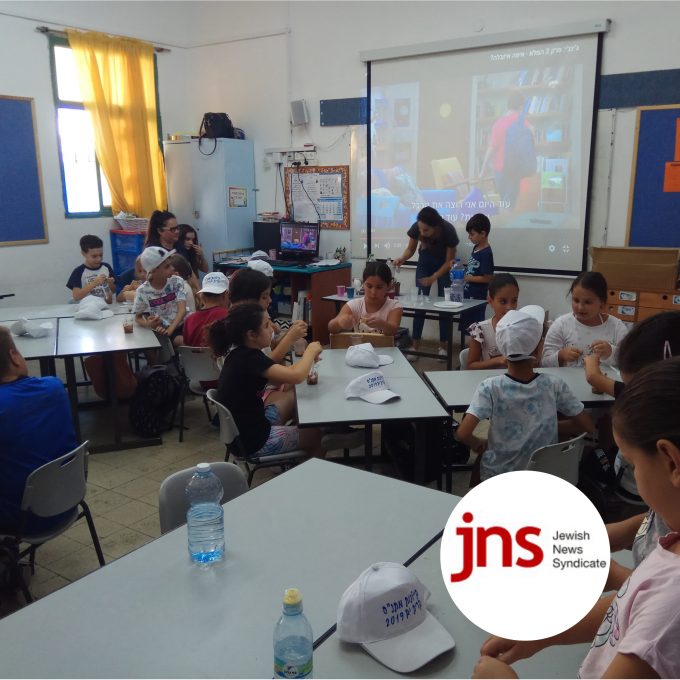25 March 2009 Back to the future with Kadima Mada World ORT is reversing the trend against teaching practical technological subjects with this weeks official launch of Phase 9 of Kadima Mada Learning Science through Technology, at Horfesh Junior High School. In recent years, high schools in Israel have abandoned technological study tracks which were increasingly seen as a last resort for those children who were not doing well in traditional science subjects and the humanities. The result is a serious shortage of technicians in the IDF and in Israeli industry, meaning that there are good career opportunities for those with the right skills. So World ORT has launched Phase 9 of Kadima Mada in seven schools, providing 12- to 15-year-olds with specially adapted, advanced Lego kits which, when combined with computer software programmes and specially trained teachers, allow the creation of mini-robots. Despite the recession there are many opportunities for good careers in low-tech industry for people with the ability to programme and work with robots and associated technology, said Kadima Mada Technology Education field team member, Shmuel Cohen. So far, we have provided schools with a limited number of kits which the schools make available to their best students. This has improved the image of technological studies and, as a result, the subject has become very popular; more and more students at all levels want to do it. The enthusiasm of the children could be seen at the official launch at Horfesh in Israels north. This Druze school shows how the support provided by World ORT through its Kadima Mada programme has planted the seed for a whole new approach to education. Horfesh was one of the schools which we provided with 10 smart classes in Phase 5 of Kadima Mada, Mr Cohen said. It then went on to use its own money to create another nine smart classes and so make the whole school interactive. Its a perfect example of a school that started off with a little and went on to embrace the whole idea of Kadima Mada. Its an ideal place, then, to launch Phase 9. The new educational trend has caused a stir in this Druze community near the border with Lebanon. Horfesh Principal Rajach Gadban said: This is a technological revolution. Kadima Mada is a voyage that has gone far and quickly; its not only given us smart classes and robot kits, its also given us a warm embrace which has helped us to achieve. Already Phase 9 has been so successful that parents have been phoning us asking for their children to be accepted into the programme. At the launch, which provided the climax to the schools celebration of International Science Week, students displayed the fruits of their initial work with the new technological course. One group of children had made a robot which, when it detected pieces of metal, lowered a magnet to pick them up and then carried its booty back to a depository. Another, younger, group built cars which carried different weights and then measured how the weight influenced performance, such as speed; the results were used to introduce the children to learning about scientific principles concerning motion. A group of older teenagers made a robot with light sensors and programmed it to follow paths emitting a relatively low amount of light. The robot was then able to track the outline of numbers written in black on large, white pieces of paper. Other creations included a machine which recognised five-shekel coins and another which was akin to a bomb disposal robot in that it uses its sensors to home in on things that, according to its programme, merit investigation. The coordinator of the Phase 9 at Horfesh. Fida Assaf, said: The teachers gave the children the basics such as how to write a computer programme using NXT software. But the ideas on where to take these skills were all the childrens. This project brings scientific theory to life for them. The children themselves expressed tremendous enthusiasm for this new avenue of learning. Alaa Gadban, 15, particularly enjoyed the process of trial and error and innovation in constructing and programming a robot so that it would be able to fulfil its function in the best way. I really feel that I have accomplished something, Alaa said. Fellow student Basil Faris, 15, who would like to be an IDF pilot, said that he wanted to study electrical engineering but that designing and building the robots had opened his eyes to possibilities in mechanical engineering and would be interested in combining the two. I would like to major in mechatronics if it were introduced as an option for matriculation, Basil said. At the launch was recently elected Mayor of Horfesh, Salach Pars, who had clearly inherited the enthusiasm for Kadima Mada shown by his predecessor, Rekad Kheredin. The launch of Phase 9 of Kadima Mada is like a window to how the school has been empowered in its capacity for scientific inquiry and creativity and in the realisation of the childrens potential. The Head of Horfeshs Education Department, Fawaz Hussein, was impressed by what he saw at the launch. This is important because it exposes children to technology, which is a key to making a living, Mr Hussein said. Rony Kalinsky, the Executive Director of Kadima Mada, told the launch: For 129 years the organisation I represent has been giving people opportunities by providing education for life. So, too, today technology surrounds us; we just need to give people the opportunity to work with it.

Back to the future with Kadima Mada
25.03.09




